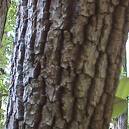Pepperidge Tree Information
Images of Pepperidge:






Pepperidge grows in the following 32 states and provinces:
Alabama, Arkansas, Colorado, Connecticut, Delaware, Florida, Georgia, Illinois, Indiana, Kentucky, Louisiana, Maine, Maryland, Massachusetts, Michigan, Mississippi, Missouri, New Hampshire, New Jersey, New York, North Carolina, Ohio, Oklahoma, Ontario, Pennsylvania, Rhode Island, South Carolina, Tennessee, Texas, Vermont, Virginia, West VirginiaInformation about Pepperidge:
The Nyssa Sylvatica is commonly known as the Black Tupelo, Blackgum, Pepperidge, Sourgum, Swamp Blackgum, Swamp Tupelo, Tupelo, Tupelo-gum as well as Yellow Gum.
The currently accepted scientific name for black tupelo is Nyssa sylvatica Marsh . Tupelo is divided into two commonly recognized varieties which are differentiated by habitat: black tupelo (Nyssa sylvatica var. sylvatica) occurs on light-textured soils of uplands and stream bottoms and swamp tupelo (N. sylvatica var. biflora) occurs on heavy organic or clay soils of wet bottomlands . This report includes information on both varieties.Black tupelo grows from southwestern Maine west to New York, extreme southern Ontario, central Michigan, Illinois, central Missouri, and south to central Florida. It is local in central and southern Mexico. Swamp tupelo is limited to Coastal Plain swamps and estuaries from Maryland and southeastern Virginia south to southern Florida. It grows on the east side of the Mississippi River to western and southern Tennessee .Kologiski has included black tupelo as an indicator or dominant in the following community type classification : Location Classification Authority se NC general veg. cts Kologiski 1977Some of the information provided here is attributed to:Coladonato, Milo 1992. Nyssa sylvatica In: Fire Effects Information System, [Online]. U.S. Department of Agriculture, Forest Service, Rocky Mountain Research Station, Fire Sciences Laboratory (Producer). , available at the USDA Fire Effects Information System (FEIS) website